Baltimore Sun
Meredith Cohn and John Fritze
June 25, 2015
The Supreme Court’s decision Thursday reaffirming President Barack Obama’s health care law returns the focus to efforts to extend insurance coverage to more Americans.
Advocates and Democratic politicians hailed the court’s 6-3 decision as an end to the challenges to the much-maligned Affordable Care Act, though Republicans vowed to continue fighting to repeal it.
The opinion found that 6.4 million people buying insurance through the federal exchange in states such as Virginia and Pennsylvania can continue to receive subsidies. While a decision the other way would not have affected subsidies in Maryland directly because the state runs its own exchange, it could have undermined the structure of insurance reform nationwide.
“The legal fights really are over,” said Ellen Weber, a law professor at the University of Maryland’s Francis King Carey School of Law. “States like Maryland now can return to questions of access and affordability. Insurance is still out of reach for many.”
Now officials can turn to what she called “second-generation” issues such as big out-of-pocket costs, lack of access to specialty care or medications, and enrollment difficulties, which remain barriers for many.
In Maryland alone, tens of thousands of people remain uninsured despite state efforts through existing programs and implementation of the exchange over the past two years.
When the law was passed in 2010, there were an estimated 800,000 uninsured people in the state. The Maryland exchange reports that 125,651 people have signed up this year in private plans, the majority using subsidies, and 355,029 people have been added to the Medicaid rolls. A Gallup poll released in February found that the rate of uninsured in the state had dropped to 7.8 percent from 12.9 percent before the law.
Nationally, 10.2 million people have signed up for health insurance under the Obama health overhaul, including 8.7 million people who are receiving an average subsidy of $272 a month to help pay their insurance premiums.
The legal challenge focused on language in the law suggesting that subsidies were only available on state exchanges, which put at risk 6.4 million people in states that didn’t build their own exchanges.
The ruling, the second high-court victory for Obama’s signature domestic legislation, had significant political implications, both for the remainder of the president’s term as well as next year’s election to replace him. Not only did the decision give Democrats a victory, it saved Washington from what would have been a wrenching debate over whether and how to help millions of people who could no longer afford coverage obtained under Obamacare.
Chief Justice John Roberts voted with his liberal colleagues in support of the law. He was also the key vote in 2012 affirming the constitutionality of the law’s tax penalties.
“Congress passed the Affordable Care Act to improve health insurance markets, not to destroy them,” Roberts wrote in the majority opinion. Limiting the subsidies only to individuals in states with their own exchanges could well push insurance markets in the other states “into a death spiral,” he wrote.
Justice Antonin Scalia disagreed. “We should start calling this law SCOTUScare,” he said, using an acronym for the Supreme Court and suggesting his colleagues’ ownership by virtue of their twice stepping in to save the law from what he considered worthy challenges.
After the decision was handed down, Obama declared that the law is “here to stay” after more than 50 votes in Congress to repeal or weaken it and a presidential election based partially on preserving or repealing the law and multiple Supreme Court challenges.
Democratic candidates for president, including former Secretary of State Hillary Clinton and former Maryland Gov. Martin O’Malley, praised the decision and called on the GOP to give up their years-long fight over the law. But Republicans said that they would redouble efforts to capture the White House and eviscerate a law that remains unpopular in much of the country.
“This decision is not the end of the fight against Obamacare,” said former Florida Gov. Jeb Bush, a Republican candidate for president. “I will work with Congress to repeal and replace this flawed law.”
In Maryland, Democratic Sen. Ben Cardin said the ruling meant millions of people in states with federally run exchanges could “exhale at last,” but Rep. Andy Harris, the state’s sole Republican in Congress, who won his election in 2010 in part by opposing the law, said the decision would “hurt all Americans.”
Lawmakers and advocates predicted that the decision could signal a shift in health policy that may benefit Maryland. As legal battles over the law wane, observers said, lawmakers can address issues like affordability and access to care.
“The decision from the court means that the coverage debate is now over,” said Rep. John P. Sarbanes, a Baltimore County Democrat and member of the health subcommittee of the House Energy and Commerce Committee. “We’re now on to looking at delivery of care, better health outcomes, better cost savings.”
Sarbanes has focused on the national shortage of primary care physicians, a problem that has been exacerbated by more people gaining access to insurance because of the law.
National advocates, meanwhile, want more states to exercise their power to improve coverage offered through their own exchanges. For instance, Ron Pollack, executive director of Families USA, said states should require insurers to provide more primary care services that don’t count against a patient’s deductible.
Pollack also said coverage should be expanded, citing California legislation that would provide state-subsidized care to children who are in the country without legal documentation.
Others said ending the legal fights may clear the way for more discussion about affordability. Some Affordable Care Act provisions attempted to do that, encouraging systems that pay hospitals and doctors based on the quality of care rather than quantity. But such a payment model has not been widely adopted.
“There is going to need to be a huge national effort to start paying for outcomes instead of treatments,” said Ralph S. Tyler, an attorney at Venable and a former Maryland insurance commissioner. “To provide universal coverage and not control the cost side is just not a sustainable path.”
Maryland, other states and federal regulators have been addressing cost issues through several initiatives, said Dr. Peter Beilenson, founder and CEO of Evergreen Health Co-op, which provides insurance on and off the exchange.
Maryland, for example, recently revamped its unique system of regulating hospital revenue to focus on keeping people healthy and encourage less costly care in the community.
Such efforts can get more attention now that the legal “cloud of distraction” is over, Beilenson said.
There are other consumer issues, including persuading people to enroll who have been confused or even disenchanted by negative publicity, said Vincent DeMarco, president of the advocacy group Maryland Citizens’ Health Initiative, which is working with the Maryland exchange to identify those people and offer guidance
The exchange is researching how best to reach the uninsured eligible to enroll through the exchange. About half the uninsured in 2010 were estimated to be undocumented and ineligible.
“Now that the outcome of King v. Burwell is clear, we must not forget the many thousands of Marylanders who still lack access to quality, affordable health insurance,” DeMarco said.
In Maryland, the exchange’s dysfunctional website has been more of a distraction then legal challenges. Thousands of people had trouble enrolling in the first year, and the technology was eventually replaced.
Carolyn Quattrocki, executive director of the Maryland Health Benefit Exchange, said officials have been working to upgrade the exchange website, consumer services and insurance offerings since its inception.
Now that the site works, officials are assessing whether its plan offerings are overwhelming, among other issues.
Exchange agents now spend more time on consumer “literacy,” she said. Online calculators will be added so people can better compare out-of-pocket costs among plans. Officials also began looking at the doctor networks after complaints surfaced that too few specialists, particularly mental health providers, were included.
Quattrocki said she had no wish list for policy or legislative changes, believing most improvements are within their current abilities.
“We now want to hone in and target the remaining uninsured, use data better to further identify who they are and how to reach them most effectively,” she said. “But we’re already looking at improving the system for those already insured.”
Tribune news services contributed to this article.
meredith.cohn@baltsun.com
john.fritze@baltsun.com
Last modified: June 26, 2015


